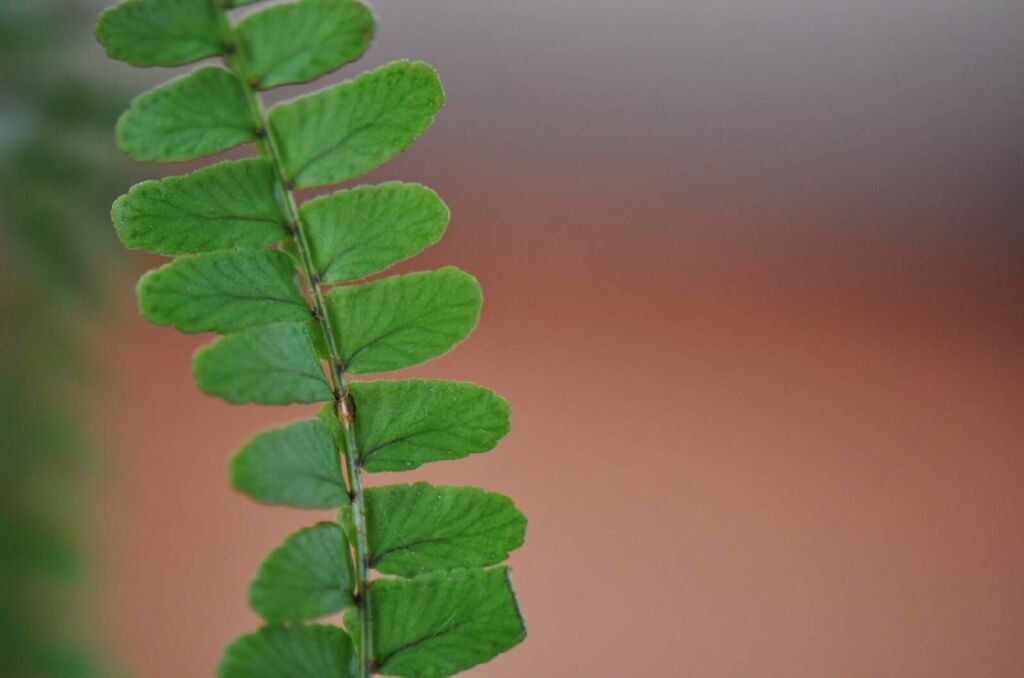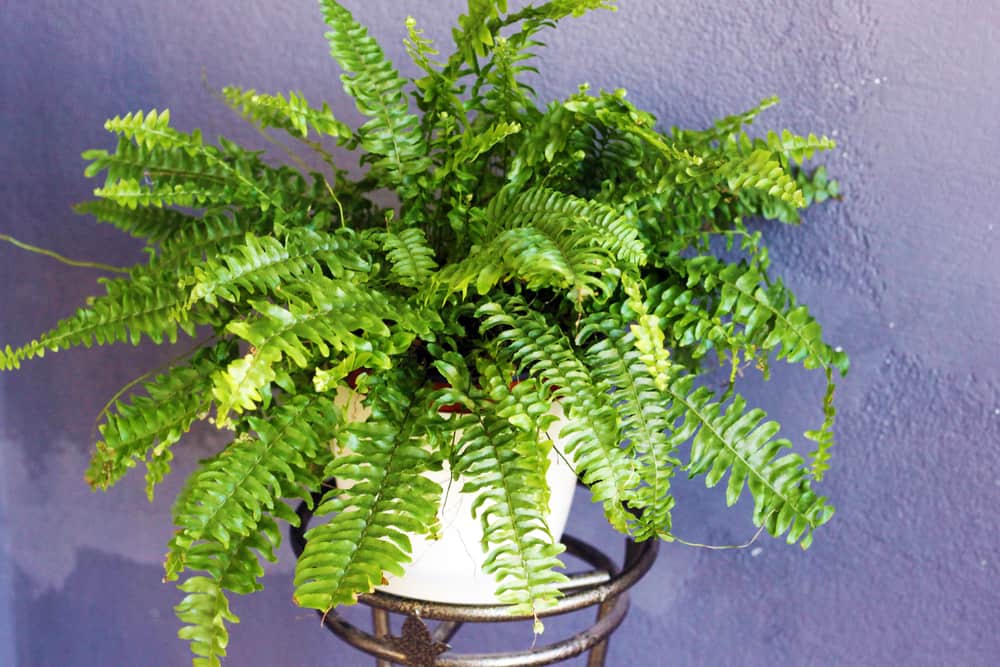HousePlantJoy is supported by our audience. When you purchase through one of our links, we may earn a small affiliate commission. As an Amazon Associate I earn from qualifying purchases. Your cost is not affected.
==================
The Ultimate Guide to Lemon Button Fern Care
(Nephrolepis Cordifolia ‘Duffii’)
If you’re looking to spruce up your living space with a lush, attractive plant, then the Lemon Button Fern is a great choice! Not only is this tropical beauty visually stunning with its lacy fronds of bright green and vibrant yellow hues. It’s surprisingly easy to care for despite having an elegant appearance. From proper watering techniques to helpful tips on repotting and more, we’ve got all the info you need on how to keep your Lemon Button Fern thriving! Keep reading for everything you need to know about caring for this beautiful houseplant.
What is a Lemon Button Fern?
Introducing the Lemon Button Fern – a unique houseplant with bright yellow-green foliage
Fern plant lovers find the Lemon Button ferns an amazing addition to their home. And for a good reason. The unique plant comes with bright yellow-green foliage that adds a touch of exotic beauty to your home or office. Native to Central America and parts of South America, these fronds create an elegant look that’s sure to add personality to any room.
Why Lemon?
The lemon button ferns emit a slight lemon scent that most people find quite enjoyable. Add a few of these around the home for a natural lemon aroma.
Are They Easy to Care for When Grown Indoors?
Like most of our favorite ferns, the Lemon button ferns require only basic care, once they are properly set in their home. When given the right amount of water, light, temperature, and humidity, they can thrive in any home. With just a few simple steps, you’ll be on your way to growing a healthy Lemon Button fern.
Setting Up Your Plant for Success
The Perfect Pot for Your Plant
Small fern plants need small pots to stay happy. Choose your favorite type of container but make sure it is slightly larger than the one it is currently in. The pot needs to have drainage holes to ensure the plant stays healthy.
It is possible to use a pot without drainage holes, but we don’t recommend it. It’s easy to overwater your plant; without drainage holes. The roots often suffer root rot.
Like most ferns, the Lemon button fern plant displays well in a hanging basket, too. Make sure your plant hook is secure and can handle the increasing weight of your growing plant. We suggest using anchor hooks such as these to ensure stability.
Another option is a plant stand that is tall enough to allow the plant’s fronds to drape over the edges without touching the floor.
What Size Pot Is Best?
If your plant is in a pot that seems a little tight, the new pot needs to be about an inch or two larger in width than the existing one. It’s best not to place a small plant in an overly large pot. Doing so often leadsd to root issues and soil that packs too tightly. This affects drainage and may drown the plant roots.
What Is the Best Soil for Lemon Button Ferns?
Fern potting mix is the ideal soil for Lemon Button ferns. It should be well-draining and contain a mix of perlite, composted bark, peat moss, and sand. This will help ensure that your plant has great drainage and moisture retention. Additionally, adding a slow-release fertilizer can provide extra nutrients to your Lemon Button fern.
Can I Grow My Fern in a Soilless Medium or Water Only?
Many people assume that ferns need to be rooted in soil. However, we find that growing them hydroponically, either in a soilless medium or in water only, works quite well.
Some soilless mediums include clay pellets, gravel or pebbles, or perlite. For a see-through container, you might even use colorful marbles. The purpose of the medium is simply to hold the roots in place. As long as it is not harmful to your plants, most soilless work fine.
Water Only?
Ferns consume large amounts of water. They always seem to be thirsty! As such, they do quite well growing in a container of water. As long as the pot keeps the plant stable, your plant thrives with a water base.
Wait, we mentioned that pots should have drainage holes to avoid root rot. Why, then, can they grow in water?
Trapped By Soil
The problem with the lack of drainage with any medium, including soil, is that the soil binds the roots. It suffocates the roots.
With water only, the lower root surface acts like a wick, drawing water up to the rest of the plant. The water contains oxygen for the roots and allows the roots space to grow.
With soilless media or water only, your fern plant grows as if the soil is still there.
Choose the Right Location to Plant Your Fern
You’ve heard the quote, “location! Location! Location!” Well, with most houseplants, including the ferns, location does indeed matter. Too little sun, and the plant fades away. Too much sun might burn your plant or cause it to brown and die.
Give Your Lemon Button Fern the Right Amount of Sunlight
Your fern plant needs some light, but not too much. Low to medium indirect sunlight is best. Remember that most ferns grow under cover of brush or trees, thus receiving filtered light. Direct sunlight burns those tender leaves, causing them to turn brown.
If you are unsure how much light your fern will get, then look for a spot that has some protection from the direct sun. A north-facing window should be good in most homes. They also do well in humid and less sunny areas such as your bathroom.
Watering and Fertilizing Tips for Optimal Growth
Watering Your Lemon Button Fern – Tips on When to Water and How Much Water to Give
Our ferns love water, and they always seem to be thirsty. But like most things in life, too much is not good, either. Give them a heavy watering when the soil seems dry. To test, push your finger into the soil half an inch.
Does it feel dry? Your plant is thirsty. Still wet feeling? Wait a day or two and check again. Yes, it’s that simple!
Fertilizing & Feeding Your Plant
As with sunlight, ferns require a little fertilizer. Too heavy a fertilizer reacts like too much sun. Your plat suffers. Use a fertilizer intended for fern plants. These contain less nitrogen as too much burns these beautiful plants.
I like to fertilize my ferns in the spring and again in the early fall. We also provide a light fertilizer when repotting.
Controlling Pests and Diseases
The humidity levels that the fern plants enjoy sometimes invite unwanted pests and diseases. Though usually not a big problem, it’s best to plan ahead and know what to do if you find them. We recommend an organic blend for your plant.
When planning your lemon button fern care, consider the humidity of your home. If needed, you can use humidity stones. A small humidifier works well, too.
How to Propagate Your Lemon Button Fern
When you enjoy your ferns, you may want more. You can always buy another but another option is to propagate from your original plant. Sound scary? It’s not. In fact, it’s quite simple.
When your plant is ready to be repotted, remove it from the current pot. We usually do this in the Spring but it can be done any time through the year. Have new pots ready with the desired medium or water.
The root ball usually looks like a tangle of strings. Carefully divide this root ball into the number of plants you wish to grow. If it’s hard to pull apart, use a sharp knife or pruning shears. It’s fine to cut some of the roots. Your plant has plenty and new ones grow quickly.
Replant these segments. I like to apply a light fertilizer at this time. Place them in a good place with indirect light. Keep them watered and watch them grow! Lemon button fern plants usually grow quite readily from these divided segments.
Growing Lemon Button Ferns in a Terrarium
While most Lemon button ferns are too large for the smaller terrarium setups, they can flourish in a large display. But keep in mind that these plants like to grow. And while lemon button fern care is easy, it might be more challenging in your terrarium.
Small new plants make the best terrarium choices. You might even start them in the terrarium, moving them out as they outgrow their enclosed homes.
Common Problems of Lemon Button Ferns & Solutions
While button fern care is relatively easy, they do have occasional problems. Common problems include over-watering, lack of moisture, yellowing leaves, and fungal growth. To prevent these issues, it’s important to check the soil moisture level frequently. Also, provide adequate ventilation for your plant.
Brown Spots
If you notice brown spots on the leaves, it may be caused by sunburn or too much fertilizer. Move your fern to a shadier spot, and reduce the amount of fertilizer you’re using. If your fern is already suffering from any of these issues, there are simple solutions. Start by trimming off affected leaves. Then place the plant in a more humid environment.
Insects
If you notice one or two bugs on your plant, simply remove it and dispose of it. However, if the plant seems to have several, it might be time to use an organic pesticide. And remember, these pests can migrate to your other ferns and houseplants, too.
Root Rot in the Lemon Button Fern
While lemon button fern care seems easy, it’s also easy to overwater this thirsty plant. When the soil becomes soggy, root rot often develops.
Like other ferns, the lemon button fern plant does not fare well with root rot. To prevent root rot, make sure that the soil is well-drained and not soggy wet. If your plant has already been affected by root rot, you can carefully remove any rotted roots or stems with a pair of pruning shears. You may also want to repot your fern in fresh soil and add a fungicide to help prevent further injury.
Good Luck With Your Lemon Button Fern Care!
Thanks for reading our guide on how to care for lemon button ferns! It might seem like a lot of information but don’t worry – with some patience and effort; you’ll soon be a pro at taking care of these delicate plants.
Please remember to do it regularly, but carefully when watering. These ferns prefer a humid and shady environment, so choose a spot in your home that matches those conditions.
Unfortunately, bugs can be a problem for your fern. Please look for any signs of insect activity, as the lemon button fern is susceptible to spider mites and mealybugs. If you do spot any, could you take immediate action to prevent further damage?
Finally, remember to give your fern some tender, loving care every once in a while. Removing dead leaves and debris, pruning when necessary, and fertilizing periodically will help your lemon button fern thrive. With a bit of attention and care, your fern will look beautiful and healthy in no time!
FAQ
Is Lemon Button Fern toxic to cats or dogs?
The lemon button fern plant is not toxic to dogs and cats. Of course, it might cause a little upset stomach if your plant eats too much. A little nibble won’t damage your button fern, but it’s best to keep the pets and plants apart.
Does the lemon button fern plant help purify the air?
Yes! The button ferns, like other ferns, provide help in removing airborne pollutants like xylene, formaldehyde, formaldehyde, and toluene. These pollutants contribute to many health issues.
How fast does the lemon button fern grow?
Lemon button ferns grow quite slowly. This means that you should be able to find a good location in your home for your plant to reside for quite some time.
How large do lemon button ferns grow?
Grown indoors, your lemon button plant may grow to a foot high or slightly more. But they also propagate as they grow, so be prepared to divide your plant about once a year. Share extra plants with your family and friends!










